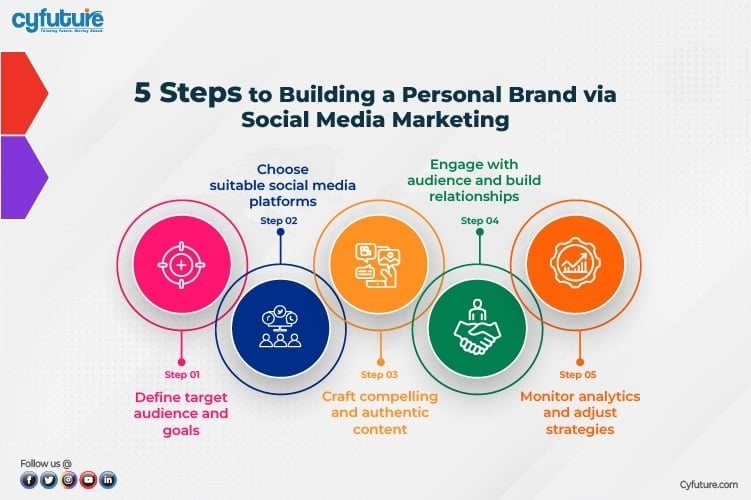In today’s fast-paced digital world, unlocking the potential of social media can make all the difference when it comes to promoting your digital products. In this friendly guide, “How to Use Social Media to Promote Digital Products,” we’ll walk you through actionable strategies to get your digital creations in front of the right audience. From leveraging the power of AI tools and exploring advanced SEO techniques to create buzz, to crafting compelling calls-to-action that convert, you’ll discover all the essential tactics you need. We’ll also delve into boosting engagement with interactive content and using influencer partnerships to widen your reach. So buckle up and get ready to elevate your digital marketing game! Have you ever wondered how to effectively use social media to promote your digital products and reach a broader audience? Whether you’re a seasoned digital marketer or just getting started, understanding the nuances of social media marketing can help you amplify your reach and boost your sales significantly.
How to Use Social Media to Promote Digital Products
Promoting digital products on social media isn’t just about making a few posts and hoping for the best. It involves strategically leveraging various platforms, understanding your audience, and continuously refining your approach based on performance metrics. Let’s dive into the detailed steps and strategies to achieve this.
Understanding Your Target Audience
Before launching any promotional activity, it’s crucial to understand who your target audience is. Knowing their demographics, preferences, and browsing behaviors helps in creating content that resonates with them.
Key Considerations:
- Demographics: Age, gender, location, income level, etc.
- Interests: Hobbies, lifestyle choices, types of content they engage with.
- Behaviors: Purchasing habits, social media usage patterns, engagement levels.
Choosing the Right Social Media Platforms
Different social media platforms cater to various audience types. The first step is to select the right ones based on where your audience spends the most time.
Popular Platforms and Their Strengths:
| Platform | Strengths |
|---|---|
| Large user base, versatile content formats, robust advertising tools | |
| Visual content appeal, influencers, Stories, Reels | |
| Real-time engagement, hashtags, trending topics | |
| Professional networking, B2B marketing, thought leadership | |
| Visual discovery, product inspiration, niche audiences | |
| TikTok | Short-form video content, trending challenges, younger demographic |
Creating Engaging Content
Content is king in the digital marketing world. Your content should provide value, entertain, and inspire your audience to take action.
Types of Content:
- Educational: Tutorials, how-to guides, webinars.
- Entertaining: Memes, humorous videos, behind-the-scenes content.
- Promotional: Discounts, product launches, limited-time offers.
- Inspirational: Success stories, customer testimonials, influencer endorsements.
Leveraging AI Tools for Content Creation and Distribution
In the era of artificial intelligence, there are numerous tools available that can help you create, schedule, and distribute your content more effectively.
Benefits of AI Tools:
- Content Generation: AI can generate blog posts, social media captions, and even video scripts.
- Scheduling: Tools like Hootsuite or Buffer can help automate your posting schedules.
- Analytics: AI-driven analytics tools can offer deep insights into what’s working and what’s not.
Advanced SEO Techniques to Boost Traffic
Search Engine Optimization (SEO) isn’t just for websites. Your social media posts can also benefit from SEO techniques, helping your content rank better on search engines and within the platforms themselves.
SEO Tips for Social Media:
- Keywords: Use relevant keywords in your posts, bio, and hashtags.
- Consistency: Regular posting improves your visibility.
- Engagement: The more likes, shares, and comments your posts receive, the higher they will rank.
Scaling Your Efforts Efficiently
As your platform grows, so will the demands on your time. It’s essential to have scalable strategies in place.
Strategies for Efficient Scaling:
- Automate: Use tools for scheduling and posting to save time.
- Outsource: Consider hiring freelancers for content creation and community management.
- Repurpose: Use your content in multiple formats across different platforms.
Running Targeted Social Media Ads
Social media platforms offer highly targeted ad options to reach specific demographics. Properly utilizing these ads can significantly increase your reach and conversion rates.
Steps to Effective Ad Campaigns:
- Define Goals: Be clear about what you want to achieve – traffic, sales, or brand awareness.
- Audience Segmentation: Target specific audience segments based on demographics and interests.
- A/B Testing: Run multiple ad variations to see which one performs best.
- Monitor and Optimize: Continuously track performance metrics and optimize your campaigns accordingly.
Building Trust and Credibility
In the digital world, trust is critical. Building credibility can convert potential customers into loyal patrons.
Ways to Build Credibility:
- Authenticity: Be honest and transparent in your communications.
- Testimonials: Share reviews and testimonials from satisfied customers.
- Quality Content: Consistently produce high-quality, valuable content.
Creating Compelling CTAs (Calls to Action)
Your call-to-action (CTA) is what drives your audience to take the desired step, whether it’s buying your product or signing up for your newsletter.
Effective CTAs Include:
- Clarity: Make sure your CTA is clear and concise.
- Urgency: Use phrases that create a sense of urgency, like “Limited time offer” or “Buy now”.
- Value Proposition: Explain what the audience will get by taking the action.
High-Converting Landing Pages
Once your audience clicks through from social media, they need to land on a page that converts them into customers or leads.
Elements of a High-Converting Landing Page:
- Clear Headline: Summarize the value proposition in one sentence.
- Visual Appeal: Use high-quality images and videos.
- Concise Content: Keep it short and to the point.
- Social Proof: Include testimonials and reviews.
- Strong CTA: As covered earlier, make your CTA compelling.
Using Interactive Content
Interactive content can significantly boost engagement rates, making your audience more likely to remember and act on your posts.
Types of Interactive Content:
- Polls and Quizzes: Encourage users to participate actively.
- Live Streams: Interact with your audience in real-time.
- Contests and Giveaways: Boost engagement and expand your reach.
Leveraging User-Generated Content
User-generated content (UGC) can serve as powerful social proof and create a sense of community.
How to Encourage UGC:
- Hashtag Campaigns: Create a unique hashtag and encourage your audience to use it.
- Feature Users: Highlight user posts on your profile.
- Incentives: Offer rewards or recognition for creating and sharing content.
Building a Personal Brand on Social Media
Building a strong personal brand can make promoting your digital products easier, as people tend to buy from those they know, like, and trust.
Ways to Build Your Brand:
- Consistent Voice: Maintain a consistent tone and style in all your communications.
- Value Sharing: Regularly share valuable, insightful content.
- Engagement: Actively interact with your audience through comments and direct messages.
Utilizing Video Marketing
Video content is highly engaging and can significantly increase your reach and conversion rates.
Types of Video Content:
- Product Demos: Showcase how your product works.
- Customer Testimonials: Real users sharing their positive experiences.
- Tutorials: How-to videos that provide value while subtly promoting your products.
Offering Incentive Programs
Incentives can motivate your audience to take action, whether it’s sharing your content or making a purchase.
Examples of Incentive Programs:
- Referral Programs: Offer discounts or free products for referrals.
- Loyalty Programs: Reward repeat customers with exclusive offers.
- Limited-Time Offers: Create urgency with time-bound discounts.
Analyzing Performance Metrics
To refine your strategy continually, it’s crucial to analyze performance metrics and make data-driven decisions.
Key Metrics to Track:
- Engagement Rates: Likes, shares, comments, and direct messages.
- Conversion Rates: Percentage of users who take the desired action.
- Traffic Sources: Where your audience is coming from.
- Customer Feedback: Reviews, testimonials, and customer satisfaction scores.
Solving Common Social Media Challenges
Low Traffic and Engagement
If you’re struggling with low traffic or engagement, consider these strategies:
Solutions:
- Content Syndication: Distribute your content across multiple platforms.
- SEO Optimization: Ensure your content is optimized for search engines.
- Interactive Content: Engage your audience with polls, quizzes, and live streams.
High Bounce Rates
High bounce rates indicate that users are leaving your site quickly without engaging.
Solutions:
- Engaging Content: Use multimedia and interactive elements to keep users engaged.
- Clear Navigation: Ensure your website is easy to navigate.
- Fast Load Times: Optimize your site for faster loading.
Low Conversion Rates
If users are visiting your site but not making purchases or signing up, you may need to tweak your approach.
Solutions:
- Targeted Ads: Run highly targeted ad campaigns to attract the right audience.
- A/B Testing: Continuously test different versions of your landing pages and ads.
- Compelling CTAs: Make sure your CTAs are clear and persuasive.
Building Trust and Credibility
Building trust is vital for converting visitors into customers.
Solutions:
- Transparency: Be honest and transparent about what you’re offering.
- Customer Support: Provide excellent customer service.
- Quality Assurance: Ensure your digital products are of high quality.
Conclusion
Using social media to promote digital products effectively requires a well-thought-out strategy that encompasses understanding your audience, creating engaging and valuable content, leveraging advanced tools and techniques, and continuously analyzing and refining your approach. By implementing these strategies, you can significantly amplify your reach, build trust and credibility, and ultimately boost your sales.
Remember, the digital landscape is always evolving, so stay updated with the latest trends and be adaptable in your strategies. Happy promoting!







